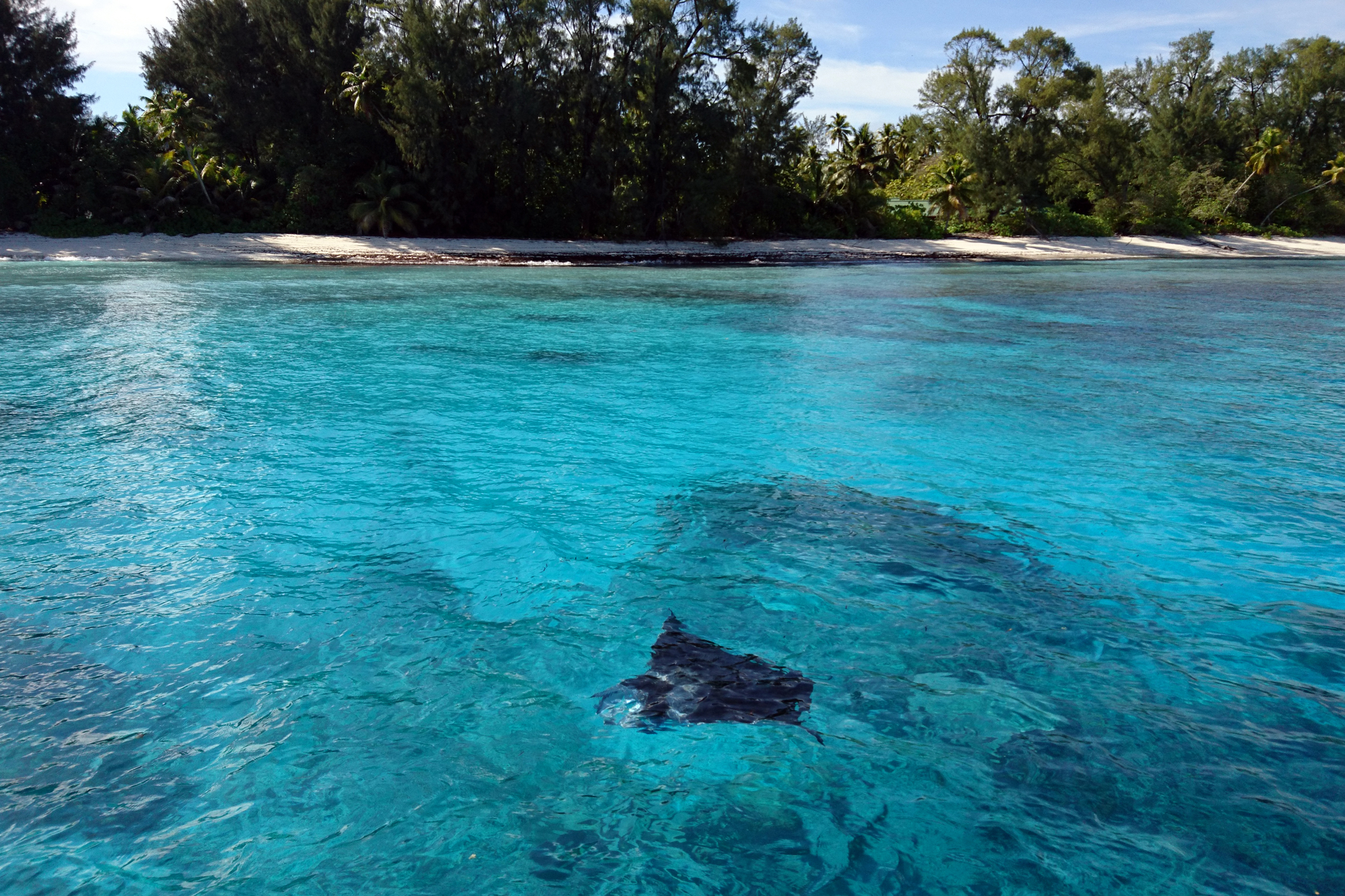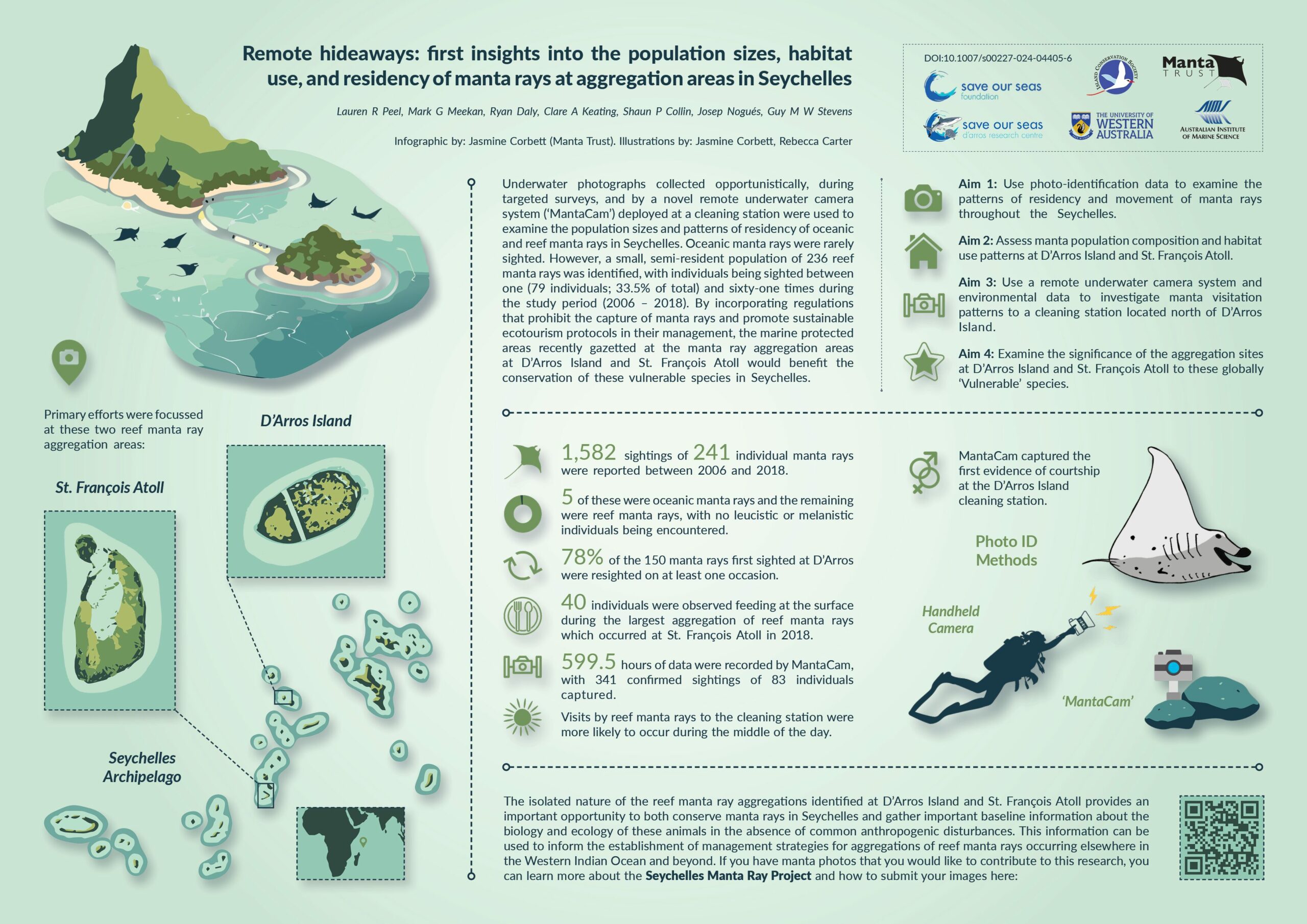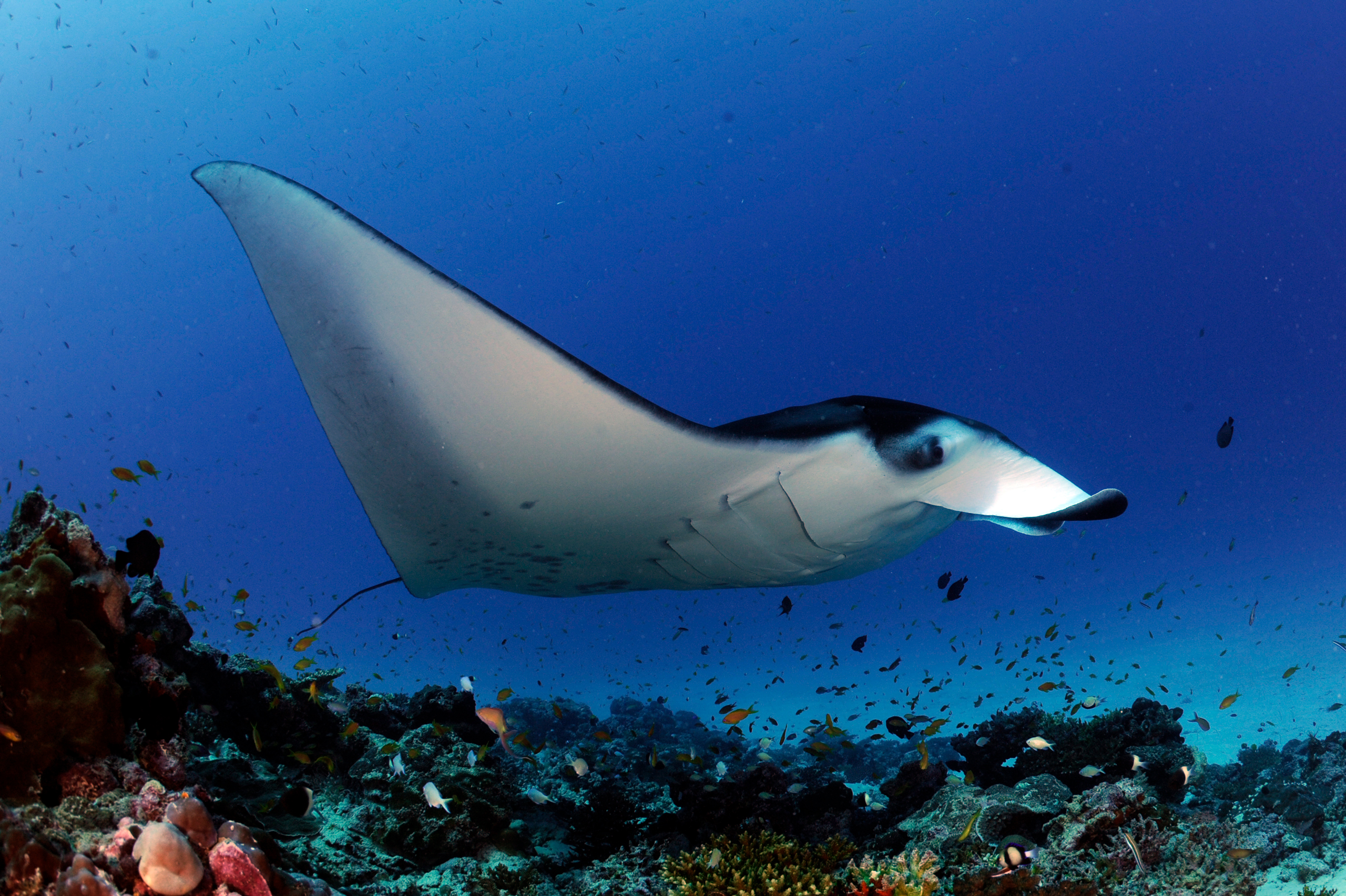D’Arros Island and St François Atoll are vital hideaways for aggregating reef manta rays
Over a decade’s worth of underwater photos taken across Seychelles have helped scientists begin to estimate how many manta rays there are in the region, and where they move. Oceanic mantas were rarely sighted, but 236 reef mantas frequented the archipelago. Most of the sightings were at the remote D’Arros Island and St François Atoll, which makes these sites especially important. With increased awareness and understanding, Seychelles is poised to aid manta ray conservation.
‘This was an adventure that generated more questions than it answered!’ Dr Lauren Peel’s passion for the Seychelles Manta Ray Project is palpable and her excitement is at fever pitch following the publication of over a decade’s worth of manta ray data from around Seychelles. Dr Peel and her colleagues have published ‘Remote hideaways: first insights into the population sizes, habitat use, and residency of manta rays at aggregation areas in Seychelles’ in the journal Marine Biology. Theirs is the first estimate of the population sizes and movement patterns of manta rays in the region. ‘It sounds like an easy task, answering these seemingly simple questions. How many manta rays are there? Where are they going? But when you consider the scale of Seychelles and how remote these coral reefs are, the whole process becomes more challenging and exciting.’
Dr Peel is the Project Adviser for the Seychelles Manta Ray Project, whose research team represented the Save Our Seas Foundation D’Arros Research Centre (SOSF-DRC), Manta Trust, University of Western Australia, Australian Institute of Marine Science, and the Island Conservation Society. Its members used unique pigmentation patterns to identify 236 individual reef manta rays from underwater photographs collected during research dives and submitted to the project by citizen scientists between 2006 and 2018. ‘Citizen scientists form a big part of our work, not only because they share data with us, but they help to raise awareness about manta rays throughout Seychelles,’ explains Dr Peel. ‘Sparking an interest in and starting conversations about manta rays across Seychelles is an exciting part of the Seychelles Manta Ray Project and it’s something that we want to nurture.’
Wherever possible, the researchers collected information about manta ray behaviours, from cleaning and socialising to feeding and courtship. New technologies helped them capture never-before-seen footage. ‘Manta Cam (a remote camera system used to monitor manta ray visits to the cleaning station at D’Arros Island over a two-month period) worked really well at D’Arros Island and helped us to observe courtship behaviour, which we had never seen before at the cleaning station,’ says Dr Peel. ‘By removing humans from the water, this remote camera really changed the game.’
Dillys Pouponeau is a research officer at the SOSF-DRC and forms part of the permanent ‘eyes underwater’ for manta ray research at D’Arros Island and St Joseph Atoll. ‘Having access to this site motivates us to prioritise mantas as one of our long-term monitoring projects. We are now taking advantage of technology to monitor them more effectively than before. Our MantaCam is scheduled and swapped in a way that ensures we always have a camera “on” at the cleaning stations. We are also starting to integrate drones into our surveys. These new methods enable us to monitor the mantas in a non-invasive manner and for longer than ever before, gathering data in their natural state.’
Unparalleled access to remote and near-pristine environments is a boon for both researchers and manta rays. ‘The remoteness of D’Arros Island and St François Atoll keeps these manta aggregations rather isolated in nature. This provides an important opportunity to both conserve manta rays in Seychelles and gather important baseline information about the biology and ecology of these animals in the absence of common human disturbances,’ says Dr Peel. For Ms Pouponeau, it’s a once-in-a-lifetime opportunity to focus her MSc study on an important species and critical conservation area. ‘D’Arros is the largest known aggregating site for reef manta rays in Seychelles. Reef manta rays are keystone species, so it is essential to study them to determine when, why and how they utilise this site,’ she explains. ‘Our goal is to understand the characteristics that make D’Arros special, and why it supports such a large aggregation of mantas compared to other islands in Seychelles.’

A reef manta ray surface feeds just off D'Arros Island in Seychelles Amirantes. Photo © Guy Stevens | Manta Trust
‘It’s onward and upward for the Seychelles Manta Project,’ enthuses Dr Peel. ‘We have a great foundation, and with our expanding network of dedicated collaborators, we’ll carry on trying to better understand the populations, critical habitat and connectivity of manta rays in Seychelles to inform the establishment of management strategies for aggregations that occur elsewhere in the archipelago, in the Western Indian Ocean and beyond. Every sighting record is valuable, so help us by submitting your manta photographs today!’


